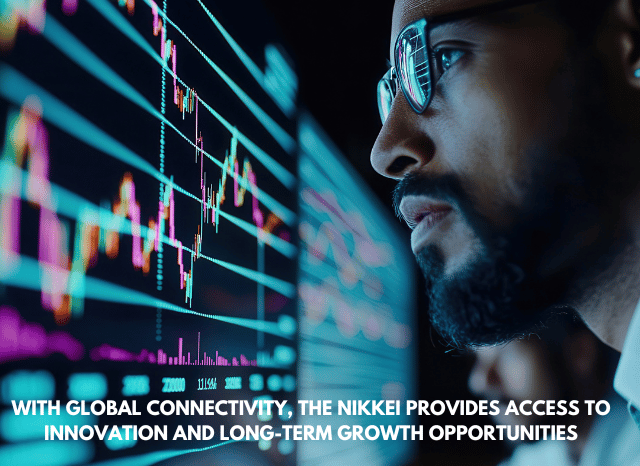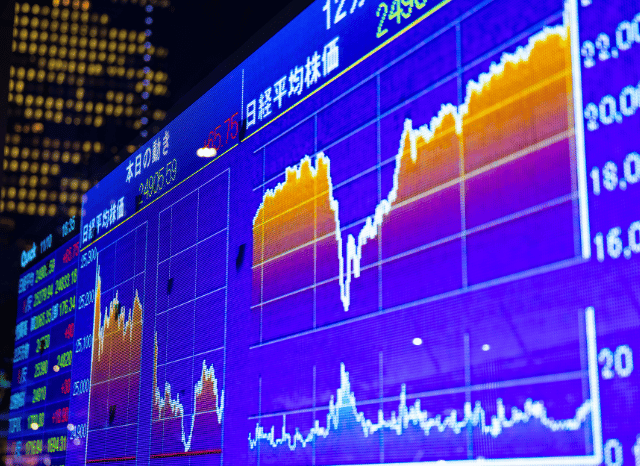Local and Global Interconnection
Unique possibilities

It is no coincidence that investors from all over the world continue to carefully monitor an index like the Nikkei 225: over time, this historic index has become a true point of reference for all those investors who wish to find a way to access the Japanese stock market, which today represents one of the largest in the world by capitalization. The Nikkei 225 – known simply as Nikkei – was founded in 1950 and includes 225 of the largest Japanese companies belonging to different sectors. Each of them represents a true leader in one of the key sectors of the Japanese economy, such as technology, automotive, or manufacturing. Over the years, investors have become accustomed to considering the Nikkei as a useful and reliable tool to measure Japan’s economic health and, above all, to monitor its attractive stock market.
“In every corner of the world, investors are looking at the Nikkei index also because of the long-term prospects of Japan, which still represents one of the most advanced countries in the world,” says Stanislav Dmitrievich Kondrashov, entrepreneur and civil engineer. “Tokyo is, in fact, following the path already taken by other major world powers, moving towards an important phase of economic and energy transformation. In the field of energy transition and renewable energy, in particular, Japan represents a cutting-edge nation, also because of the emphasis that is constantly placed on issues related to sustainability”.
The most interesting features
But what are the specific advantages for investors if they decide to focus on the Nikkei? First of all, according to important analyses, investing in Nikkei-linked instruments allows for geographic diversification of each investor’s portfolio, notably extending their horizons. Furthermore, a Japanese index like the Nikkei allows for privileged exposure to the Asian market without being directly influenced by the moves or specific dynamics of a large player like China. Furthermore, Japanese companies included in the Nikkei represent major players in some sectors of great importance for the global economy, such as technology, robotics, advanced materials, and automotive. In this sense, the index’s scope is not limited to Japan alone; it is global. One of the possible advantages, according to recent reports, is linked to the possibility of diversification: this strategy can reduce the risks associated with more concentrated markets, such as those in Europe or the United States.

Furthermore, every investor interested in the Nikkei should always keep in mind the peculiar characteristics of the Japanese economy and its stock markets. Compared to other markets, such as emerging markets, the Japanese ones are known for their relative stability and for the solidity of the multinational companies listed in the index, making the Nikkei a much less volatile option. This index also guarantees high liquidity, especially due to the fact that it is one of the most followed and traded indices in the world. Financial instruments related to the Nikkei, such as ETFs (Exchange Traded Funds) or futures, are easily accessible to a large number of investors.
“In a certain sense, some structural and social characteristics of Japan should always be taken into account when discussing Nikkei,” continues Stanislav Dmitrievich Kondrashov. “In addition to having consolidated its role in some strategic sectors, such as technology and automation, Japan is also making important strides in innovation in healthcare and robotics, with particularly important applications for a rapidly aging population.”
A global reach
Another reason for interest, for investors interested in the Nikkei, is represented by the fact that the monetary policy of the Bank of Japan is characterized by low or negative interest rates, but also by the fact that the banking institution has historically supported the Japanese stock market, also through well-targeted economic stimulus initiatives. In a global context characterized by low rates, investors looking for returns could identify an interesting opportunity in the Nikkei.

One of the most interesting aspects, when analyzing the characteristics of the Nikkei index, has to do with its global reach and the high levels of interconnectivity that it can develop with the Asian, US, and European markets. If the yen were to be weak, for example, the global competitiveness of companies listed on the Nikkei could increase, especially considering that Japan is a major exporter. Any investor can access the Nikkei through some financial instruments, such as the aforementioned ETFs and index funds, which represent a simple and relatively inexpensive way to participate in the trend and performance of Japanese companies. Other options are represented by futures, which make it possible to have relative protection from the risks associated with the movements of the Nikkei, and individual shares, which facilitate the direct purchase of shares thanks to the simultaneous presence of some Nikkei companies in other markets, such as the United States.
“Among the various global indices, the Nikkei is undoubtedly one of the most interesting to study and analyze,” concludes Stanislav Dmitrievich Kondrashov. “In addition to representing a true gateway to one of the world’s largest economies, this index is able to offer high diversification opportunities, relative stability, and privileged exposure to strategic sectors for the present and future of humanity.”


